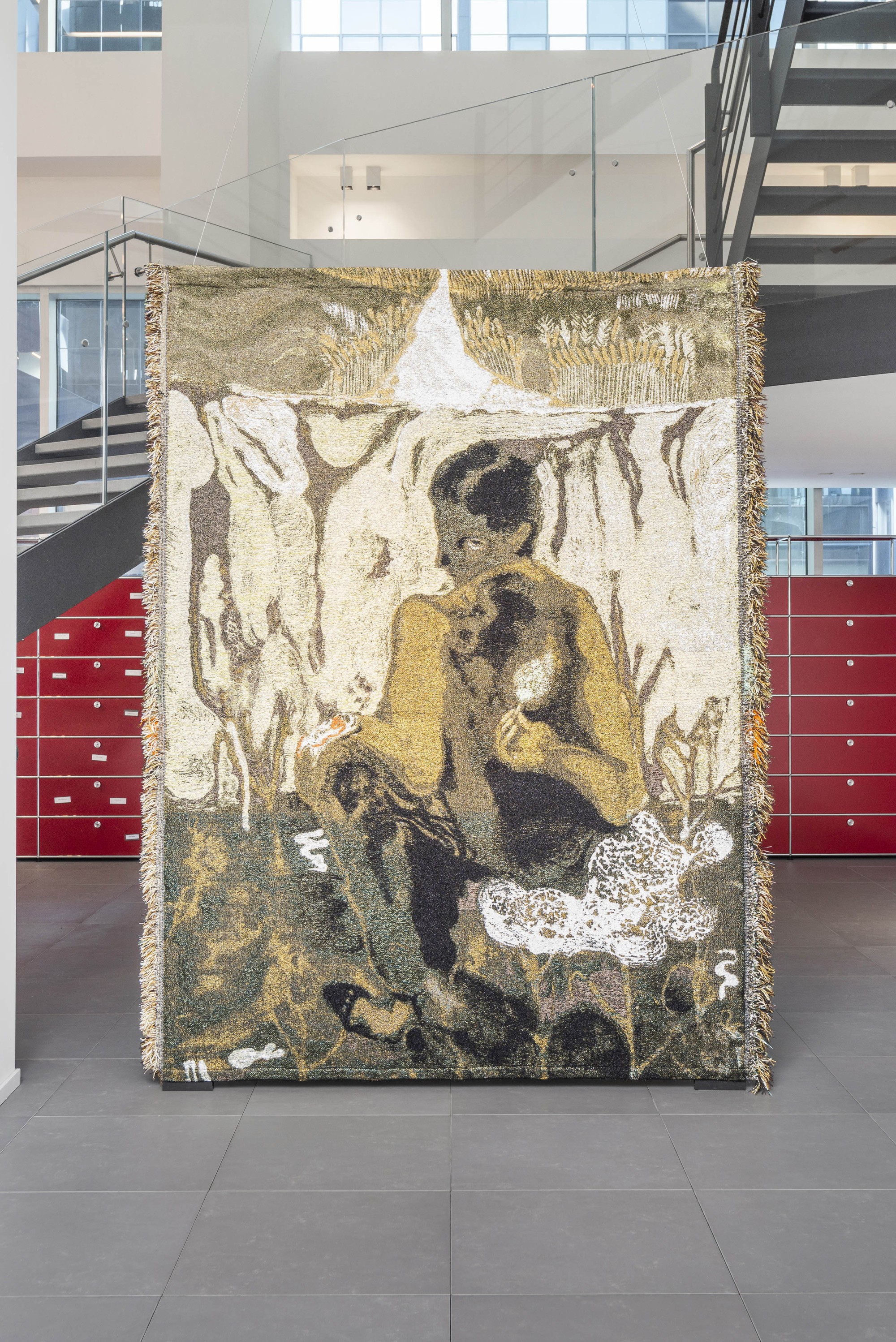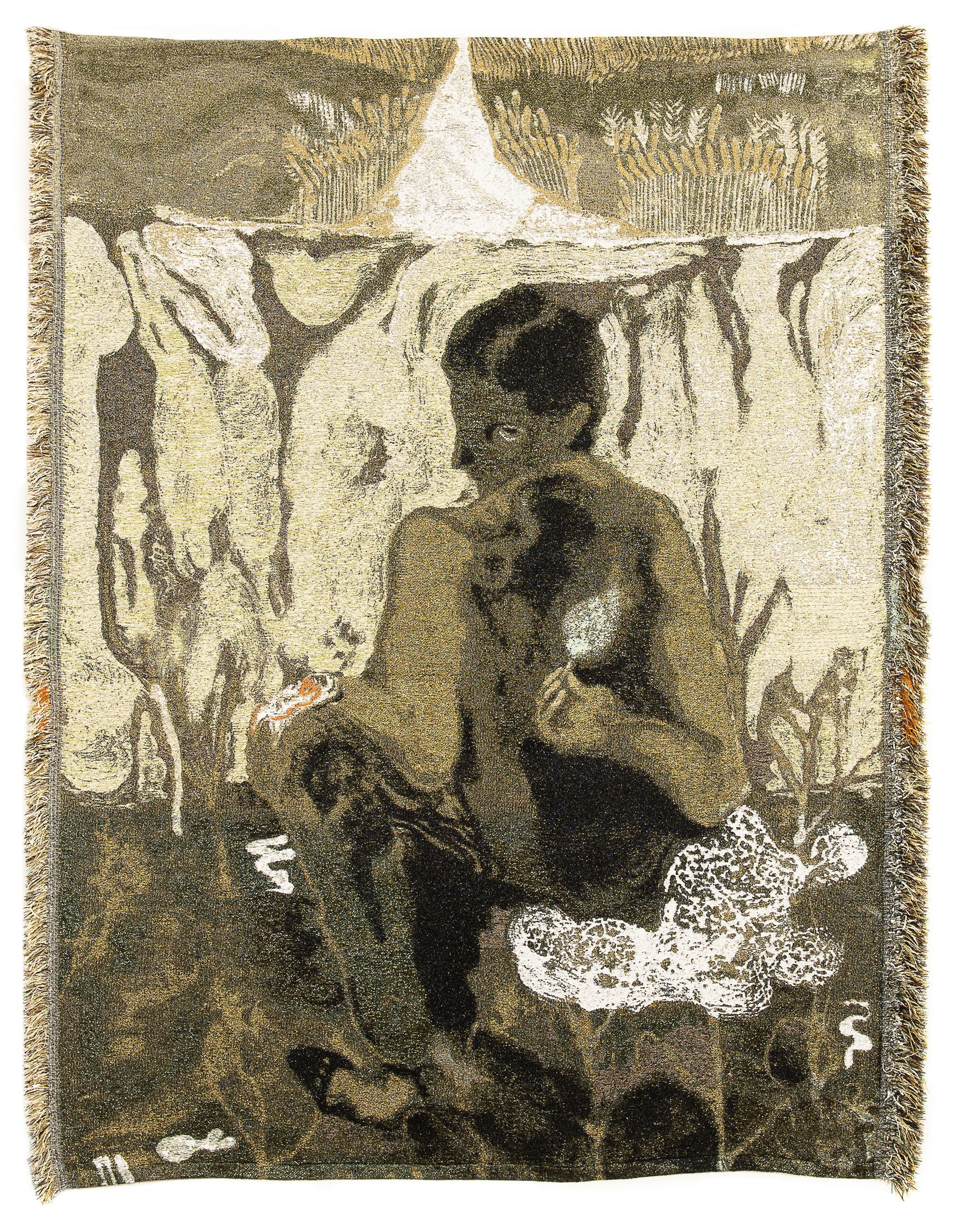Guglielmo Castelli produced his tapestry with A Collection translating “Dorofoco” (2019, mixed media on canvas, 40x30, courtesy private collection). This is a particularly relevant work because it tells of his relationship with painting and the growth of his awareness as a painter and artist.
“ (...) There was a reproduction of Monet's “Poppy Field” in the school I attended as a child, hung in the canteen above us.
On one side was the crucifix, on the other was Impressionism.
It was a depiction of this huge field of wheat and poppies, with two figures in the midst of the summer sun.
I hated that painting, it made me uncomfortable.
Perhaps it was more because of the priests who controlled our diet as well as our education, but for many years that vision caused me a physical posture of almost reverential fear: I did not see art in it, but only desire to escape.
It took years and a good dose of elective affinities gone wrong to realise that that very same field returned in Dorofoco.
Dorofoco is one of the works that, in recent years, I have felt closest to the dichotomy that I carry within me every time I approach the palette.
Approaches and bounces before seeing a form come to life, almost experiencing sickening spasms when the colours that came out were not the ones I was actually feeling.
One day I went back to see the antique chinoiserie and those deep blues, the emaciated and worn velvets, and when I returned to the canvas I was reminded of Monet.
That Monet was not only light years away, but a blameless enemy, but no less a bearer of unhappy memories.
So I set fire to everything (...)”
(in ATP Diary, I (never) explain #99 Guglielmo Castelli)


